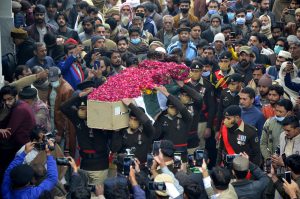In mid-September, Baloch Nationalist Army (BNA) chief Gulzar Imam was arrested in Turkey after landing from Iran. The news of his arrest has neither been confirmed nor denied by Baloch separatist groups and Pakistani security institutions. However, in off-the-record conversations, both sides acknowledge that Imam has been arrested.
One of the three main leaders of the Baloch separatist insurgency, Imam founded the BNA earlier this year by merging his faction of the Baloch Republican Army (BRA) with the United Baloch Army (UBA) His detention is a tactical success for Pakistan’s counterinsurgency campaign in Balochistan and a setback for the BNA. However, it will not impact the Baloch insurgency in a major way.
For contemporary insurgent movements involving multiple insurgent actors with a socially resilient support base, leadership decapitations and arrests are inconsequential. The current Baloch insurgent movement involves around five rebel groups; it is decentralized, with its center of gravity residing in the middle class and tentacles extending beyond Pakistan’s borders in Iran, Afghanistan, and Europe.
Imam’s detention might enable Pakistani security agencies to disrupt the BNA’s network in Balochistan, but it will not weaken the overall movement. This has been the case in the past as well. For instance, when the mastermind of the 2018 Chinese Consulate Attack in Karachi, Aslam Achu, who was also the head of his faction of the Baloch Liberation Army (BLA), was killed in Afghanistan, his group emerged stronger under his successor Bashir Zeb. Likewise, when Baloch tribal elder Nawab Akbar Khan Bugti was assassinated in a military operation in August 2006, Baloch separatism took a violent turn. The same was the case with the elimination of the BLA’s founder Mir Baloch Marri in November 2007 near the Afghanistan-Pakistan border.
The current phase of the Baloch insurgency, which is the fifth wave, does not revolve around a single charismatic figure (tribal elder) or a tribe, unlike in previous phases when the insurgency was spearheaded by Mengal, Bugti, and Marri tribes.
Furthermore, the current phase of insurgency is the longest, most resilient, and most lethal as compared to the previous waves. Similarly, while autonomy was the main demand in the previous four waves, separatism is the raison d’être of the current wave. For socially resilient insurgent movements, which the current Baloch insurgent wave is, replacing leadership is not an uphill task.
In 2015, the Baloch insurgency was substantially weakened by internecine fighting over resources, leadership disputes, successful counterinsurgency operations, and the surrender of hundreds of mid-level commanders and foot soldiers. At that time, new leadership emerged to fill the vacuum. Dr. Allah Nazar Baloch of the Baloch Liberation Front (BLF), Basher Zeb of the BLA, and Imam who at that time headed his faction of the BRA rose through the ranks of the Baloch Student Organization-Azad (BSO-A), a Baloch student body spread across Balochistan’s colleges and universities.
In the current Baloch insurgent movement, leaders are not indispensable. Over the years, as the Baloch rebel groups have evolved operationally and organizationally in a challenging conflict environment, they have structured their groups in a way not to be top-heavy. Their strength lies is in their narrative, which resonates with their supporter-base, and agile organizational structures, not their leaders. Hence, the Baloch insurgent movement will move on from Imam’s arrest as it has done in the past.
Presently, the Baloch conflict is stalemated with both sides not in a position to impose a military solution over the other. In asymmetrical conflicts, the success of insurgent groups against a conventionally superior adversary lies in stalemating the conflict militarily to force political negotiations. However, in Balochistan’s case, due to a serious lack of trust on both sides and a genuine lack of political will, the political process is absent, and the conflict is lingering on and assuming more extreme forms such as the adoption of suicide terrorism.
The Baloch insurgency is at a crossroads; it needs to decide whether it wants to prolong the conflict or engage in a political process. Research on insurgent movements indicates that if goals are unrealistic, battlefield stalemate notwithstanding, the chances of success are minimal. Therefore, the Baloch insurgent groups will have to show some political flexibility. Otherwise, the insurgency will linger on endlessly.
The Pakistani state will have to address the genuine grievances of the Baloch people if it wants to regain their trust. It is the only way to weaken the insurgents’ influence in the province. On the contrary, if structural discrimination coupled with political and socioeconomic marginalization of Balochistan continues, the vicious cycle of violence will continue unabated, irrespective of leadership detentions and decapitations. One hopes that sanity will prevail and both sides will engage in a political process to find a viable solution to the woes of the Baloch people.

































